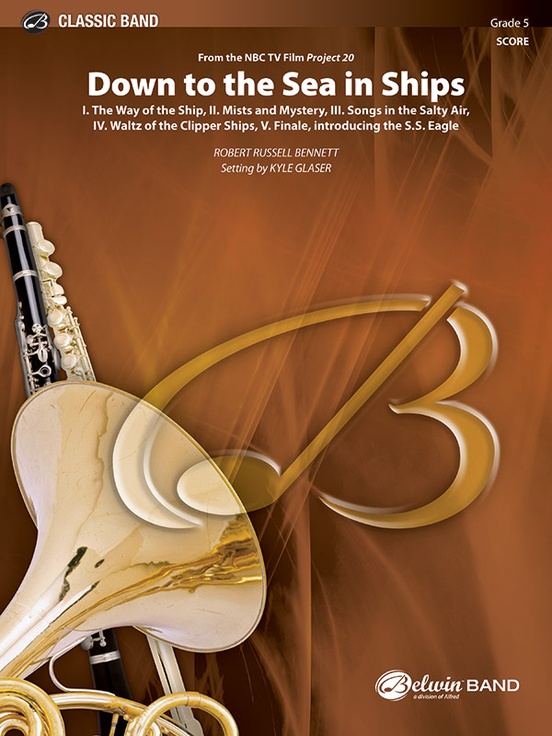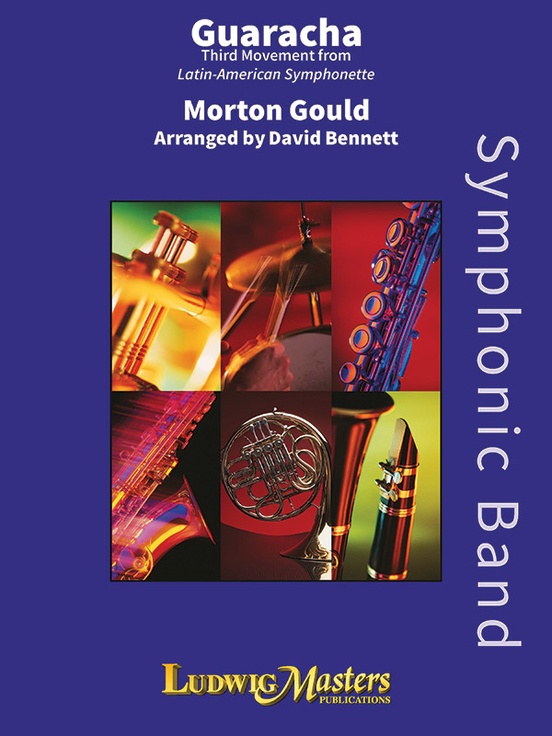Results
-
 £59.95
£59.95Variations VIII & IX (From Enigma) (Concert Band - Score and Parts) - Elgar, Edward - Brand, Geoffrey
Elgar's Variations for orchestra were written during 1898-9; they are dedicated "To my friends pictured within" Each of the 14 variations is a musical portrait to one of the composer's friends. Over the 17 bar theme which inspired the Variations, Elgar wrote the word ENIGMA. Later he said, "The ENIGMA I will not explain - its "dark saying" must be left unguessed" In Variation VIII W.N. is Winifred Norbury. In 1897 local friends organised a choral and orchestral society for Elgar to conduct. The secretaryship of The Worcester Philharmonic, as the society was called, was shared by two ladies, of whom W.N.. was one She has been described as "very sedate and calm, rather like a kind governess with Elgar, but had a sense of humour - and a laugh, rather like a deep bell". Variation IX Nimrod is Elgar's deeply felt tribute toA.J.Jaeger, his German-born friend who worked for the publisher Novello and Co. His sincere support meant a great deal to Elgar. Jaeger, in German, means "hunter". Elgar concealed this in the nickname Nimrod. The variation has become extremely popular and is often played on thoughtful occasions. In this arrangement, either W.N. or Nimrod can be played alone. However, in the Variations they are linked by Elgar in an inspired manner.
Estimated dispatch 7-14 working days
-
 £11.95
£11.95Variations VIII & IX (From Enigma) (Concert Band - Score Only) - Elgar, Edward - Brand, Geoffrey
Elgar's Variations for orchestra were written during 1898-9; they are dedicated "To my friends pictured within" Each of the 14 variations is a musical portrait to one of the composer's friends. Over the 17 bar theme which inspired the Variations, Elgar wrote the word ENIGMA. Later he said, "The ENIGMA I will not explain - its "dark saying" must be left unguessed" In Variation VIII W.N. is Winifred Norbury. In 1897 local friends organised a choral and orchestral society for Elgar to conduct. The secretaryship of The Worcester Philharmonic, as the society was called, was shared by two ladies, of whom W.N.. was one She has been described as "very sedate and calm, rather like a kind governess with Elgar, but had a sense of humour - and a laugh, rather like a deep bell". Variation IX Nimrod is Elgar's deeply felt tribute toA.J.Jaeger, his German-born friend who worked for the publisher Novello and Co. His sincere support meant a great deal to Elgar. Jaeger, in German, means "hunter". Elgar concealed this in the nickname Nimrod. The variation has become extremely popular and is often played on thoughtful occasions. In this arrangement, either W.N. or Nimrod can be played alone. However, in the Variations they are linked by Elgar in an inspired manner.
Estimated dispatch 7-14 working days
-
 £18.95
£18.95CAUSE FOR CELEBRATION (Prestige Concert Band Extra Score) - Barry, Darrol
Extra Score. Cause for Celebration opens with a fanfare-style idea, followed by two quieter ideas before the fanfare returns, the music moving without a break into the celebration proper. The main idea of the Allegro is an energetic theme for full band which is interspersed with contrasting sections of the band. Eventually the opening fanfare returns but is interrupted by a short, but lively, coda. Recorded on Polyphonic QPRM151D TIME LINES (Great British Music for Wind Band Vol.12)
Estimated dispatch 7-14 working days
-
 £94.95
£94.95CAUSE FOR CELEBRATION (Prestige Concert Band Set) - Barry, Darrol
Score and Parts. Cause for Celebration opens with a fanfare-style idea, followed by two quieter ideas before the fanfare returns, the music moving without a break into the celebration proper. The main idea of the Allegro is an energetic theme for full band which is interspersed with contrasting sections of the band. Eventually the opening fanfare returns but is interrupted by a short, but lively, coda. Recorded on Polyphonic QPRM151D TIME LINES (Great British Music for Wind Band Vol.12)
Estimated dispatch 7-14 working days
-
 £150.00
£150.00Down to the Sea in Ships (from the NBC TV Film ) - Robert Russell Bennett / setting by Kyle Glaser
An outgrowth of NBC's 1952 successful tele-documentary was two years later: a 30-episode series that was scored completely by Robert Russell Bennett. The episode, called "Down to the Sea in Ships," utilized this score that initially aired in December of 1968. The magic of the sea, the beauty of ships, and fascination for the men who sail them, are fully explored in this five-movement epic work that relies heavily on sea shanties and folk material. In regarding the work in Bennett's own words, it "had a lot to tell us about our struggles, triumphs, and defeats on the mighty ocean." The movements are titled; "The Way of the Ship," "Mists and Mystery," "Songs of the Salty Air," "Waltz of the Clipper Ships," and "Finale, Introducing the S.S. Eagle March." This fresh, carefully edited concert band transcription has been extensively researched and will be a cherished addition to serious band literature for generations to come. (14:00)
Estimated dispatch 3-5 working days
-
 £53.95
£53.95Guaracha: Third Movement from Latin American Symphonette (Symphonette No. 4) - Morton Gould, ed./arr. by David Bennett
The "Guaracha" is the Third Movement from Mr. Gould's fourth Symphonette, LATIN AMERICAN SYMPHONETTE, which is in four movements - Rhumba, Tango, Guaracha, and Conga. The "Guaracha," relatively speaking, is the "minuet" movement. The name has two implications - one, that of a "drinking song" to which the word Guaracha is extensively employed in South American music, and second, that of a definite dance pattern. This movement has utilized both ideas, being a development rather than a literal interpretation of the original form. The Symphonette was completed in the winter of 1940 and received its first performance with the NYA Symphony under the direction of Fritz Mahler on February 22, 1941. This version for band is arranged from the original score by David Bennett.
Estimated dispatch 3-5 working days
-
 £84.99
£84.99I Say A Little Prayer - Burt Bacharach
This bittersweet song from 1967 is a real classic, partly due to the rendition by two queens of soul, Dionne Warwick and later also Aretha Franklin. The theme was very topical at the time: A woman is concerned about her husband fighting in the Vietnam War, and thinks about him during her day-to-day worries. Top arranger Peter Kleine Schaars created a tasteful and carefully orchestrated version. His arrangement stays true to the original colour and feel of the song, and, as a grade 3 piece, is still perfectly playable for most bands.
Estimated dispatch 7-14 working days
-
 £204.99
£204.99Humperdinck Variations - Bert Appermont
After attending a performance of Hnsel und Gretel by Engelbert Humperdinck, the composer decided to write a commissioned piece for 4 horns and concert band based on the beautiful melody "Abendsegen", as used in Engelbert's famous overture. The composition can be performed with three or four solo horns with cues in the others parts and in the band. This work can be played with the horn section of your own band; the two extra horn parts noted in the full score are optional and can be left out. This piece is a stunning challenge for your french horn section!
Estimated dispatch 7-14 working days
-
 £71.50
£71.50The Huntress - Karl L. King
This Karl King gem was written during King's days as a "trouper" with the circus, and it really shows! A brass fanfare is followed by two magical strains which are unmistakable "King-tunes", and the trio shows influence of ragtime, which was the great musical craze of the time. Embellished with a delightful piccolo solo (but not too difficult!) this wonderful King classic will bring the house down! Includes extensive historical information, rehearsal suggestions, and performance suggestions.
Estimated dispatch 7-14 working days
-
 £211.60
£211.60Jekyll & Hyde - Alex Poelman
Dr Jekyll researches the evil in man and succeeds in creating a potion that transforms him into his alter ego, Hyde. However, Jekyll loses control and fights an inner battle with Hyde. He loses this battle when Hyde commits murder. Understanding that there is only one way to resolve this, Jekyll kills himself and thus Hyde. In this solo concert the main characters Jekyll and Hyde are played by two solo trumpeters. The different sides of the trumpet are highlighted in this story: from the lyrical passages (Jekyll) to the sharp, mean and dark passages (Hyde). A challenging adventure for orchestra and soloists.This is rental music. Please contact us at [email protected]
Estimated dispatch 7-14 working days
